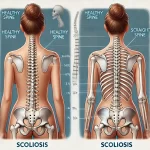
Bone marrow transplant is a medical procedure that involves replacing a patient’s damaged or destroyed bone marrow with healthy bone marrow stem cells. The procedure has become increasingly common over the years and is considered one of the most effective treatments for various types of cancer and other blood-related diseases. There are three main types of bone marrow transplants: Autologous, allogeneic, and syngeneic. Each type has its advantages and disadvantages, and patients need to understand the differences to make an informed decision. In this blog, we’ll discuss each type of bone marrow transplant and its benefits and risks
Autologous bone marrow transplant:
An autologous bone marrow transplant is a procedure that involves harvesting a patient’s bone marrow stem cells and storing them before administering high-dose chemotherapy or radiation therapy to treat cancer. After the cancer treatment, the harvested stem cells are reintroduced into the patient’s body. The idea behind this procedure is that the high-dose chemotherapy or radiation therapy kills off the cancer cells while preserving the patient’s bone marrow stem cells.
The advantage of an autologous bone marrow transplant is that the patient’s own stem cells are used, reducing the risk of rejection or graft-versus-host disease (GVHD). Additionally, the patient does not need to find a donor, which can be a difficult and time-consuming process. However, there is a risk of cancer cells being reintroduced into the patient’s body along with the stem cells. Therefore, patients with aggressive cancers may not be eligible for an autologous bone marrow transplant.
Allogeneic bone marrow transplant:
An allogeneic bone marrow transplant is a procedure that involves transplanting bone marrow stem cells from a donor, typically a sibling or an unrelated donor, into the patient’s body. The donor’s stem cells are matched to the patient’s HLA (human leukocyte antigen) tissue type to reduce the risk of rejection.
The advantage of an allogeneic bone marrow transplant is that the donor’s immune cells can attack and destroy any cancer cells that may be left in the patient’s body after chemotherapy or radiation therapy. This is known as the graft-versus-tumor (GVT) effect. Additionally, allogeneic bone marrow transplants can be used to treat certain non-cancerous blood disorders, such as sickle cell anemia and thalassemia.
However, allogeneic bone marrow transplants carry a higher risk of complications, such as GVHD, in which the donor’s immune cells attack the patient’s tissues. GVHD can cause a range of symptoms, from skin rashes to severe organ damage. Additionally, finding a suitable donor can be difficult, and the patient may need to wait several months or even years to find a match.
Syngeneic bone marrow transplant:
A syngeneic bone marrow transplant is a procedure that involves transplanting bone marrow stem cells from a genetically identical twin into the patient’s body. Because the donor is genetically identical to the patient, there is no risk of rejection or GVHD. The advantage of a syngeneic bone marrow transplant is that it eliminates the risk of rejection or GVHD, making it the safest type of bone marrow transplant. Additionally, because the donor is a genetically identical twin, there is no need for HLA matching, and the procedure can be performed quickly
Indian Health Adviser (IHA) is a healthcare facilitator seeking to make health and wellness easier for people of international residents, their families, and their friends.
Designed by Acmeinfolabs